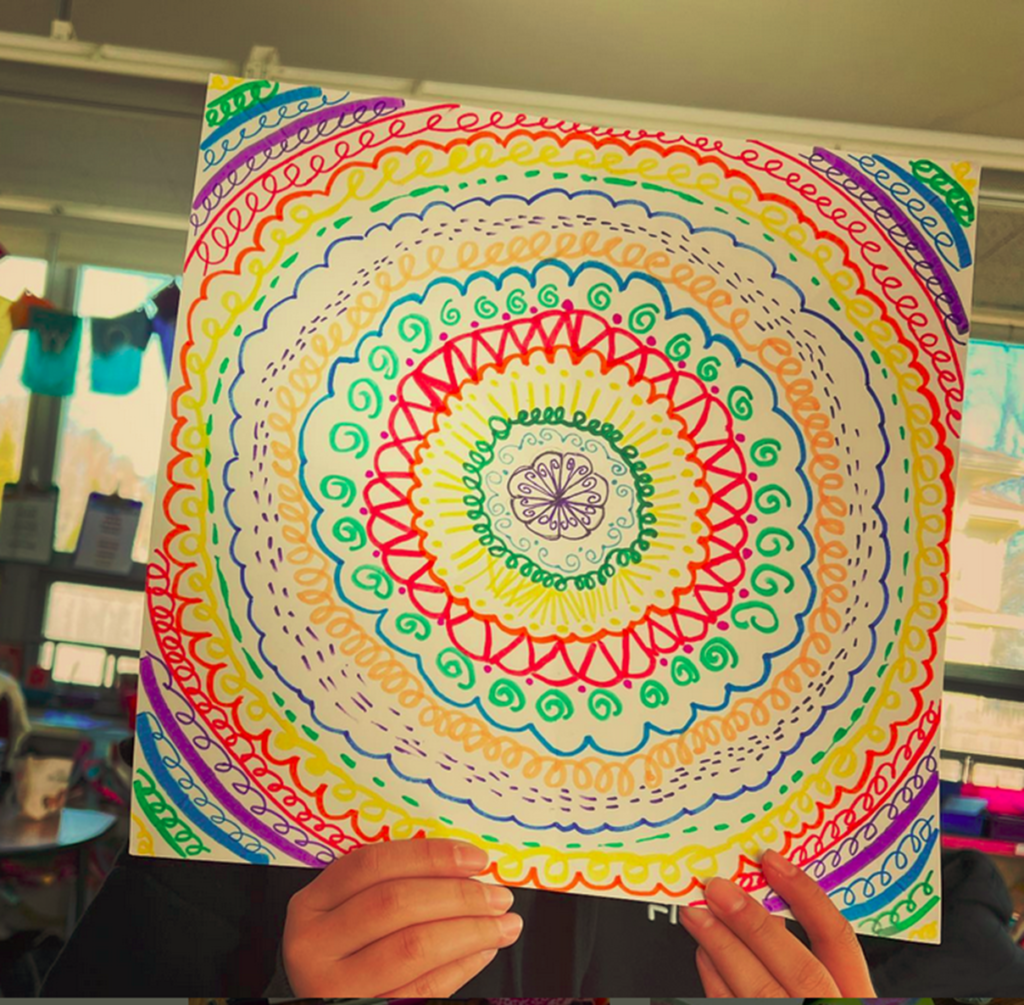Power of the Arts: A COVID-19 Silver Lining

Remember when teaching was “only” about high achievement, standardized testing, active shooter drills and differentiating our instruction? All kidding aside, the fact that educators have been juggling those demands with the new educational landscape of hybrid and remote learning along with mask mandates and more…may I just take a collective deep breath on behalf of all of us? However, being an eternal optimist, I am convinced there is a silver lining that cannot be missed here. How can we help students navigate the modern world and heal from the traumas of pandemic life? The arts can heal, catalyze change and give the robust answer we are looking for.
As children are experiencing higher rates of anxiety and depression, we must look a little deeper. What is a tactile, joyful and calming strategy for a generation of anxious children? Why, it is the arts, of course. Knitting, breadmaking and even TikTok dancing and singing contain lessons for us. In both art and general education classrooms, students and teachers alike have experienced a sense of calm, and the science proves it. Studies have found that there is a significant reduction in cortisol levels when creating art.1 Specifically, when artists create and color mandalas,2 the opportunity for stress reduction is profound and notable. Any teacher who uses these methods would agree that the proof is in the pudding and in the noise level. Engagement in the classroom is something that oftentimes cannot be measured through statistical data but rather through an energetic sense of joy and focus.
At our school, Memorial Spaulding Elementary in Newton, Massachusetts, we work to integrate the arts with other core content areas. For example, our Civil Rights unit in social studies and literacy is a space where artivism lives and thrives. Project Zero’s Visual Thinking Strategies provides a chance to look at photography as a primary source. Students examine photographs by Gordon Parks to understand important historical events such as the Little Rock Nine or bus boycotts. We create our own responses to the world, using protest and peaceful posters as a form of expression to demonstrate the power of artists’ voices. Studies have shown that artmaking changes brain structures and connections, shifts self-perceptions of creative problem solving and improves attention.3 Students’ roles in finding their own voices through arts is paramount in today’s ever-changing and visual world.
As students grow and change in these formative years in school, the arts help them find confidence and a meaningful sense of identity. Integrating the arts in all educational opportunities and lessons is key and may provide a practical and efficient way to improve children’s self-esteem. The arts foster a deeply rooted sense of purpose and opportunity for owning their own voice as part of a larger society.
The research is clear: artmaking is a way to make sense, meaning and purpose for our students in a complex world. Schools must ask the big questions: Who are we? And what do we want for and from learners? Curating the future requires us to create a reality of what we hope students can be – creative innovators. Students who engage in the arts “learn how to see new patterns, how to learn from mistakes, and how to envision solutions – they are the ones who are likely to come up with the novel answers most needed for the future.”4 It is a complex and elaborate job that educators face in preparing for an unknown future. Arts integration is a model that elevates and utilizes the captivating qualities that the arts so naturally possess and unifies all that education is striving to deliver. Jump in…the arts will challenge, heal, stretch, differentiate and deepen learning for students and…for you.
1Girija Kaimal, Kendra Ray, and Juan Muniz, 2016, Reduction of Cortisol Levels and Participants’ Responses Following Art Making, Art Therapy: Journal of the American Art Therapy Association, 33(2) pp. 74–80
2Renée van der Vennet and Susan Serice, 13 Jun 2012, Can Coloring Mandalas Reduce Anxiety? Journal of the American Art Therapy Association Volume 29, 2012 -Issue 2
3GirijaKaimal, HasanAyaz, JoannaHerres, RebekkaDieterich-Hartwell, BindalMakwana, Donna H.Kaiser, Jennifer A.Nasser, (September 2014), Functional near-infrared spectroscopy assessment of reward perception based on visual self-expression: Coloring, doodling, and free drawing, The Arts in Psychotherapy, Volume 55 , Pages 85-92
4Winner, E. & Hetland, L. (2007, September 2) Art for our sake: School art classes matter more than ever-but not for the reasons you think. The Boston Globe



